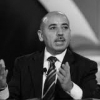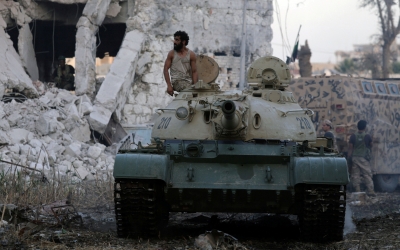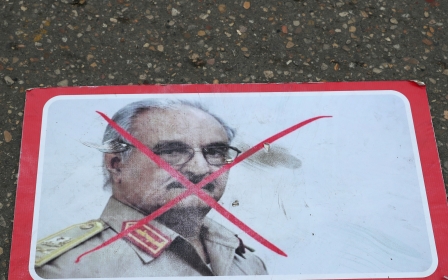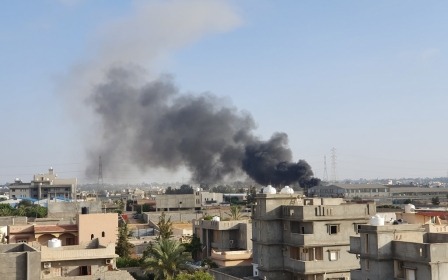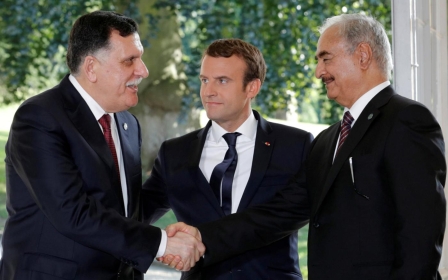Militias and mercenaries: Haftar's army in Libya
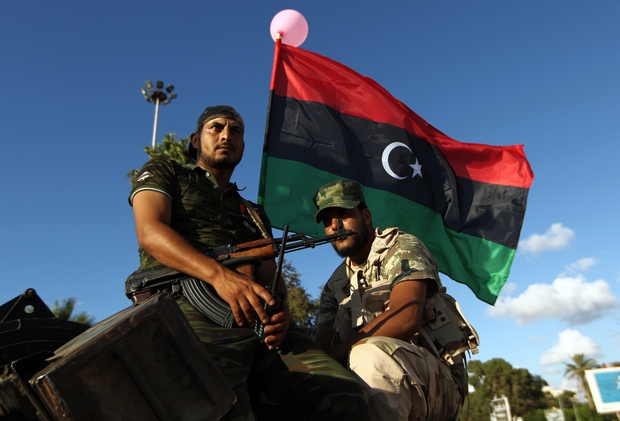
Since the 2011 revolution, Khalifa Haftar has been looking to play a leading role in the new Libya.
Many Libyans were sceptical of allowing the renegade general to take part in rebuilding Libya and its army, believing he could not be trusted. In 2014, he failed in his attempt to stage a military coup against the first democratically elected parliament, before launching Operation Dignity to drive his opponents out of Benghazi.
His latest attack against Tripoli has used the same anti-terrorism rhetoric. Yet while there has been a perception internationally that Haftar has been building a professional and disciplined army, the Libyan National Army (LNA), this couldn’t be further from the truth.
Tribal militias
The so-called LNA is neither entirely Libyan, as it sometimes relies on foreign mercenaries, nor is it national, as many of its leaders hail from certain eastern and central tribes. It cannot be described as a regular, professional army, as it contains “a significant irregular, localised militia component” believed to number between 40 and 60 percent of the army’s total forces.
New MEE newsletter: Jerusalem Dispatch
Sign up to get the latest insights and analysis on Israel-Palestine, alongside Turkey Unpacked and other MEE newsletters
Tribal militias, drawn especially from the east and the suburbs of Benghazi, have been denoted as “support forces” - armed civilians who represent a key component of Haftar’s so-called LNA. They carry out arrests and confiscate property belonging to Haftar’s critics and opponents, whom they have conveniently branded as “terrorists”.
Prior to his recent war on Tripoli, Haftar was branding all military groups in areas not under his control ... as militias and criminals that must be purged
Another group upon which Haftar relies are the Salafist “Madkhali” militias. This is ironic, as Haftar’s narrative has always been against religiously inspired Islamic fundamentalist groups. Yet he incorporated these Salafist groups partly because they have loyalties to the Saudi and UAE regimes, who are key backers of Haftar.
Among the earliest Madkhali groups to join Haftar’s army was the Tawhid Battalion, commanded by Izz al-Din al-Tarhuni. Another important Salafist unit operating within Haftar’s LNA is the Tariq Ibn Ziyad brigade, which gained attention in February 2017, after releasing a video allegedly showing the execution of an Islamic State fighter. Other Madkhali Salafist militias affiliated with Haftar’s army include the Subul al-Salam armed group and the al-Wadi Brigade.
Brutality and bloodshed
Prior to his recent war on Tripoli, Haftar was branding all military groups in areas not under his control - especially in the west of Libya - as militias and criminals that must be purged.
Yet when he attacked Tripoli, he made an alliance with the notorious al-Kaniyat militia - a family-run militia that established, through sheer brutality and bloodshed, full control over the city of Tarhuna. The group has been associated with many brutal crimes and killings.
Foreign mercenaries drawn from different countries and nationalities are also part of Haftar’s forces. Sudanese “Janjaweed” mercenaries from the Darfur region, in western Sudan, have been recruited by the hundreds. Military groups from Chad have also been recruited to fight with Haftar, especially in southern Libya.
But the most significant addition to Haftar’s list of mercenaries comprises fighters belonging to the Russian Wagner Group, the Kremlin-linked private security company that was also involved in Russia’s intervention in Syria. Some 200 highly professional Wagner fighters are believed to have arrived in Libya in recent months to support Haftar’s assault on Tripoli.
According to the Moscow Times, between 10 and 35 Russian mercenaries might have died while fighting in Libya recently. Photographs of what appear to be Russian fighters in areas of combat south of Tripoli have been shared widely on social media.
Absolute power
The reality of Haftar’s LNA is that it is, in fact, largely composed of militias and mercenaries. This shatters the myth, widely propagated by Haftar’s supporters and foreign backers, that he has been building and leading a professional, disciplined army.
It is ironic that Haftar, in his campaign to rise to absolute power in Libya, uses the premise that his opponents are extremist militias who must be eradicated. Yet most of his so-called army is merely a coalition of militias, mercenaries and criminals, including a senior commander for whom the International Criminal Court has issued an arrest warrant.
The views expressed in this article belong to the author and do not necessarily reflect the editorial policy of Middle East Eye.
This article is available in French on Middle East Eye French edition.
Middle East Eye delivers independent and unrivalled coverage and analysis of the Middle East, North Africa and beyond. To learn more about republishing this content and the associated fees, please fill out this form. More about MEE can be found here.


